The symbol of Versace and the cross symbol of the German SS flag have Iranian origins!
The symbol of Versace and the cross symbol of the German SS flag have Iranian origins!
Mehr round or crucifix, It is an Iranian symbol that has been used in many temples and logo and flag designs.
The newspaper of the Hitler era considered the pattern that was on the Nazi flag and was known as their symbol, an ancient gift from Iran.! This symbol is the same “Gardone Mehr” in Iran and “round the sun” It is in Greece “Mehrisht Avesta” adored. On the other hand, the margins around the trademark “Versace” can be seen to “round stamp” Or “Chalipa” is similar. This sign has been seen in the architecture and historical places of many other countries and in the temples of other religions.
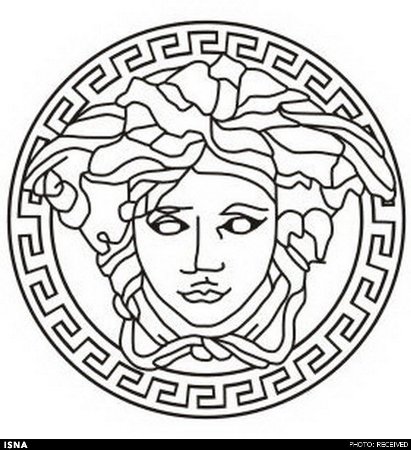
The history of the cross symbol
For the first time, the Chalipa symbol was found in the land of Khuzestan, which dates back to five thousand years BC, and it is believed that this symbol has ancient roots in Iran and existed in the fabric of people's thoughts and beliefs.. Of course plaster casts of “Gardone Mehr” Also on the walls of the northern part of the historical city “Bishapur” It can be seen in the ceremonial hall that dates back to two thousand and 276 years ago. Based on the information obtained by exploring only three percent of this city and also because of its proximity to the Anahita Temple and the Mosaic Porch, it can be said that this building was part of the royal palace and Shapur I received his guests in this hall..
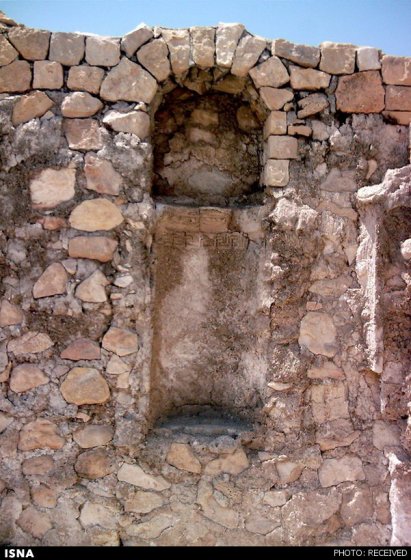
A member of the Central Council of the Young Like-minded Association comments about these plaster casts and their similarities.: A part of the plasterwork that remains above the niche on the northeastern side of the ceremonial hall, in ancient Iran “Gardone Mehr” Has been named.
"Mohsen Abbaspour" continues: Belief in the circle of the seal goes back to a series of beliefs of Mehrs that refer to the sun. The meaning of love is not love; Because practically, during the Sassanid era, such an act was not done. The orientation and look at this symbol tells about the rotation of life based on the rotation of the sun.
The date of the German SS flag or round stamp
he adds: Later, the round sign of the seal was used in other places, and it is even said that the sign that we see on the German "SS" flag is derived from this sign; But the Nazi badge is really from “Gardone Mehr” whether it is taken or not should be asked from the graphic artist who designed it. There is no document in this field either, but due to the similarity of the two, the hypothesis that the "SS" symbol is derived from the round of the seal comes to mind..
This member, who was previously one of the guides of the Bishapur historical complex, adds: The sources that tell about ancient Iran is the history written by Greek historians including "Herdot"; Although in recent times, many archaeologists who came to Iran to explore historical monuments, have had slips of faith in their reports; For example, "Grishman", who was exploring Bishapur complex, with a local name named “Pillar of offerings”, says that people used to make their vows here during the Sasanian period. This is due to the misconceptions that archaeologists had, because in Zoroastrian religion we do not see such a vow..
Abbaspour also states:On the other hand, many archaeologists have taken the books they have studied from the social environment they experienced in the West.. Sometimes they want to relate the indigenous issues that exist in Iran to themselves and say that we were the basis of such a thing, but when this issue is rooted and the scientific flow of their history is applied, we realize that there was no common area between them. Or if it was, it is not enough to affect some levels.
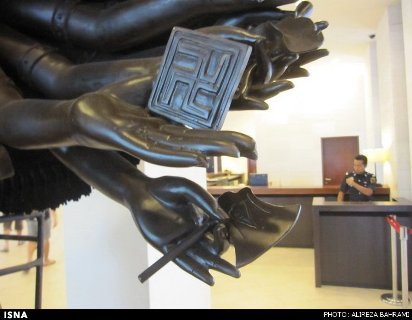
Imported view of foreign archaeologists – The symbol of Versace and the symbol of Chelipa
He continues by stating that he does not rule out all the cases in this field: Usually, archaeologists and foreign researchers have an imported view of our historical works and want to somehow attribute our history to their possessions..
This member of the young like-minded community explains that Shapur I used artists from different countries when building Bishapur, and this sign may have come from Greece.:This city was built based on the open view of architecture, but it cannot be easily said that the round seal was taken from ancient Rome, because we have many examples of it that were made before the Bishapur period..
Abbaspour adds: Certainly, throughout the history of Iran, cultural exchanges have been carried out directly and indirectly with other countries and empires, even now this connection exists, but to relate all these things to other countries and then put ourselves in Anfal. and none of their contents are communicated to us, it cannot be a scientific understanding.
he adds: We can see different cultures in the ancient city of Bishapur. Anahita Temple's pediments remind you of Apadana Palace in Persepolis, which means that Achaemenid architectural patterns have been used in this city.. In this collection, we have places where we can undoubtedly say that its architecture is not Iranian and is derived from ancient Rome. The memorial columns of Bishapur definitely bring the mind of every viewer to the Roman architecture, because its texture and decorations are Roman..
Abbaspour says: According to archaeologists, there were 64 niches around this hall where Shapur received his special guests.. The 786-square-meter roof of this hall was without columns, which at that time did not exist anywhere in the world without a central column.. The plaster casts of this collection were colored and it can be concluded from these results that it was a place to receive ambassadors and special guests from other countries..
The "Chalipa" motif, which also had a religious color, was used in the period of Islamic architecture, the tomb of "Shah Nematullah Wali" in Kerman, the tomb of "Sheikh Safiuddin in Ardabil", the Jame Mosque of the Old City of Nain and the Jame Mosque of Varamin, among these religious places. They are after Islam. Artists using this symbol have the name of Hazrat Ali(ع) have created.
Chalipa is seven thousand years old
Nusratullah Bakhturtash wrote in the book "Mysterious Sign".: The works of “چلیپا” It is related to almost seven thousand years ago, but human life reaches two million years ago. It is still not possible to say since when this symbol occupied the thought of the ancient man and on what basis he made a role out of it and made an array that women hang around their necks..
He says: If this sign was seen only in ancient Greece and Rome, we could say that it went from Iran to those two countries and then to other places following political, military, economic and cultural connections, but when the footprint of this symbol was found in Among the American Indians, we can see that such a statement no longer has any merit and it cannot be assumed that he followed the path of Greece and Rome only with the seal cult, which this symbol is also one of its characteristics, but it should be said that with the dispersion of the Aryan people to all the lands, he followed the path has been found.
“چلیپا” Human and animal bodies, gravestones, war weapons, necklaces, spinning wheels, vessels and the heads of houses are engraved and gradually found a place in literature.. Hafez sings: Who is the ring of that tall man's foot chain/Zolof Chalipa and six plagues of faith?
In 1355, in the city of Rudbar, Gilan, a golden necklace was discovered with three crucifixes engraved on it and it dates back to the first millennium BC..
Iran, the land of Chelipa
In Azerbaijan, tombs in the shape of a pot were also found, among which a piece of cloth with a broken crucifix design was found.. In this place, a piece of pottery was obtained from a pot, on its surface, we can see this sign prominently, which is currently preserved in the Museum of Ancient Iran.. On the island of Kish, plaster casts in the form of leaves and plant stems have been seen in the Palace of Tisphon.. Some of the dishes or coins on which the round seal is engraved are kept in the British Museum, a clay jar from the Sialk Hill belonging to the first millennium BC is kept in the Museum of Ancient Iran, on which a crucifix can be seen in a circle, from this The direction of Iran is called the land of crucifixes.
The influence of Iranian art on Greek art – The symbol of Versace and the symbol of Chelipa
This sign has been seen in many great civilizations. According to "Girshman", Iranian art, especially the Sialk areas of Lorestan, had a great influence on Greek art, and the history of the crucifix in Iran is older than 5 thousand years BC.. It is very likely that this sign went from Iran to Greece and gained symbolic value.
It should not be forgotten that the culture and art of Iran left an impact in Greece and the Mehri religion went there and other lands through Iran, and the philosophy of Iran also found its way into the thought of Greek scholars.. A pointed dish and a bronze pendant from Lorestan were discovered in Greece and it tells that two trade routes north and west were open to Greece, from where Iranian and Urartian products went to Greece, and if Greek art from the third quarter of the 8th century BC Inspired by the Orient, it is believed that one of the inspiring arts was the art of Iran.
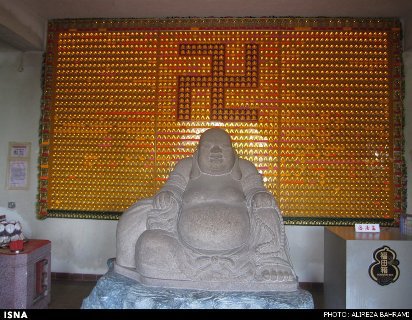
Chalipa among other countries such as Egypt, India, China, Japan, Assyria in the north of Iraq, England, Iceland, Lithuania, Germany and other ethnic groups among the American Indians, Buddhists, Scandinavians and … has been seen.
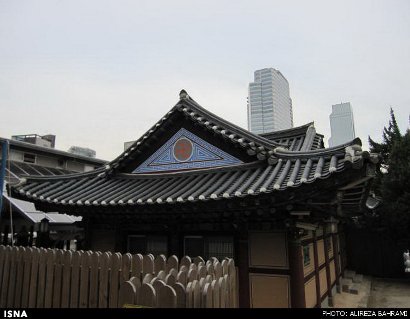
This role in the tomb of Joseph son of Caesar (Nakhchivan)Mir Arab School, Karate School (Türkiye), the tomb of Khwaja Abdullah Ansari (Afghanistan) has also been used.
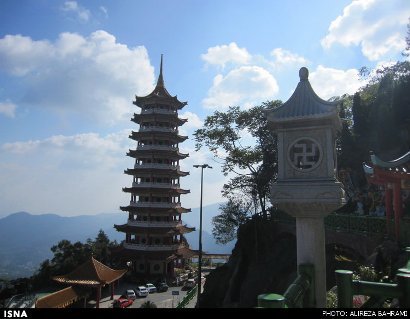
There is a crucifix in most Indian temples. This pattern can also be seen in parts of the Malaysian Temple of Heaven and Hell or South Korean temples.
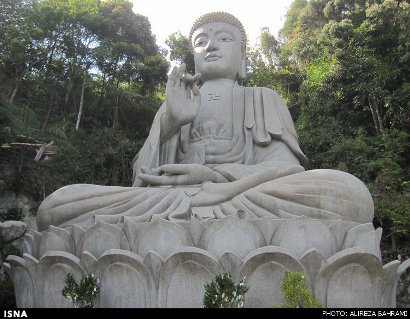
According to "Bakhturtash", in the religious literature of India, a pair of kindling sticks can spark and catch fire as a result of rubbing against each other.. These two sticks, which are placed on top of each other in the form of a cross, are assumed to be male and female “Agni” which has a divine origin, was created from it, and brings people's prayers to God's court.
Because light and fire were sacred, the crucifix was accepted as a symbol of illumination, and man always carried this symbol, which he knew to be the embodiment of divinity, and wherever he built a temple, he built it in the shape of a crucifix and used it on the temples' carvings and art. Architecture guided him.
It seems that this is a realm of doubt, and doubt is an order that is not certain. Let's not forget that there is no belief that is not rooted in the past.



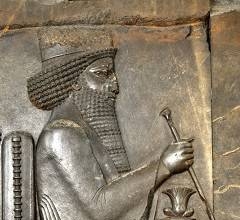

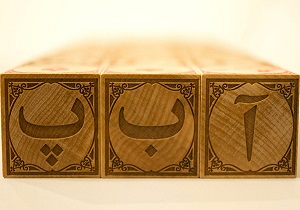
Hello, thank you for your informative content, I wanted to mention the verse :Who is the ring of that tall man's foot chain/Zolof Chalipa and six plagues of faith?…In the text above, this verse is attributed to Rumi.
Thank you and respect
Shahyad
It is not Iranian, this Medusa is a Greek monster who was cursed by Athena, the Greek god, and anyone who looked into her eyes would turn to stone.
Medusa had a snake on her head instead of hair, but this is not a snake